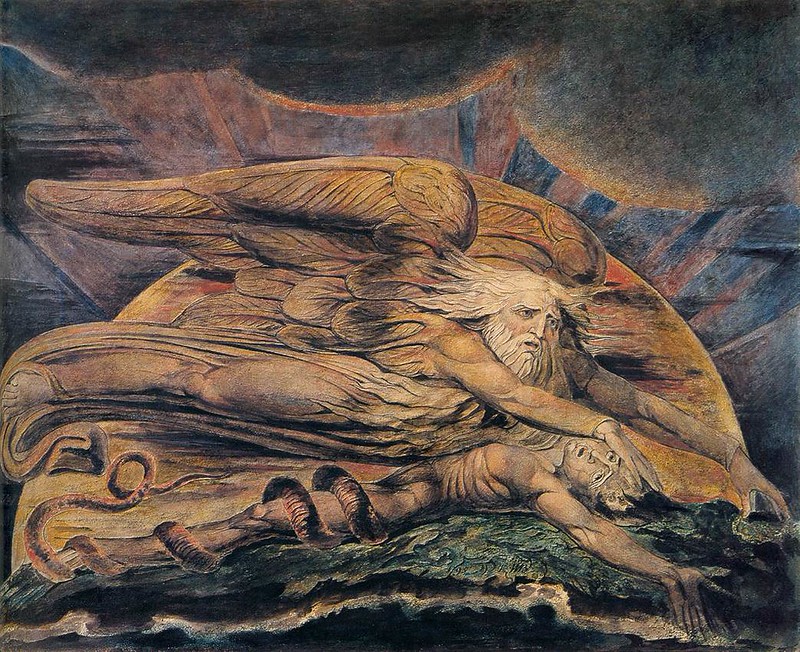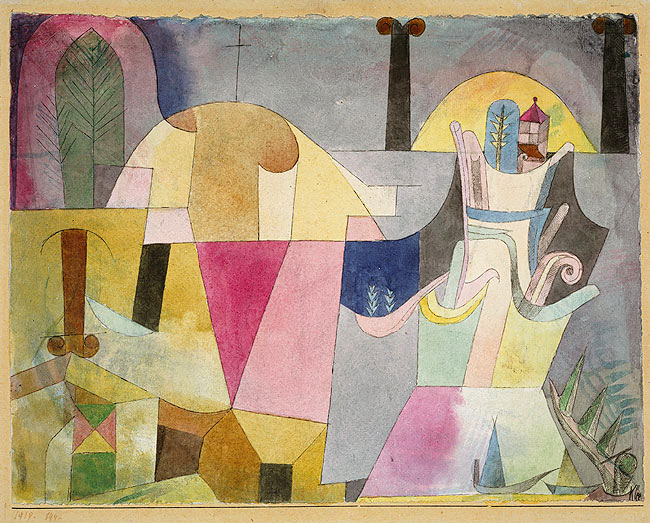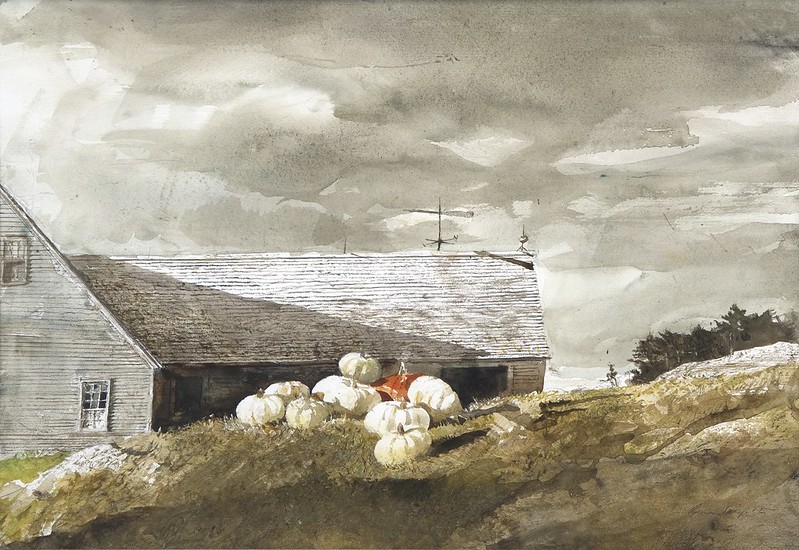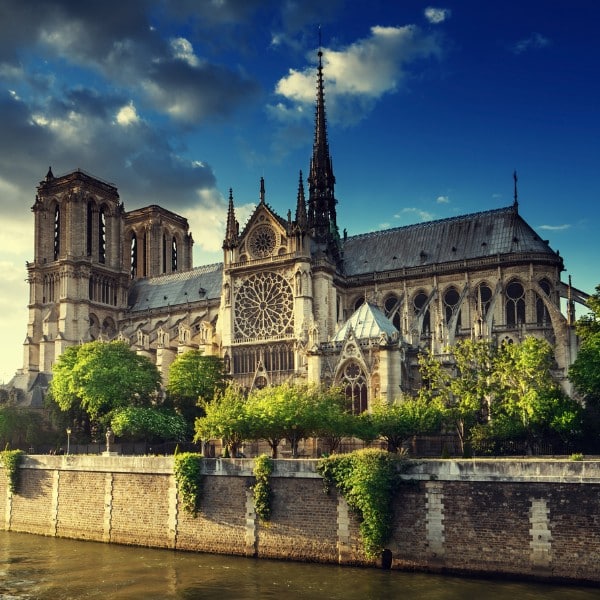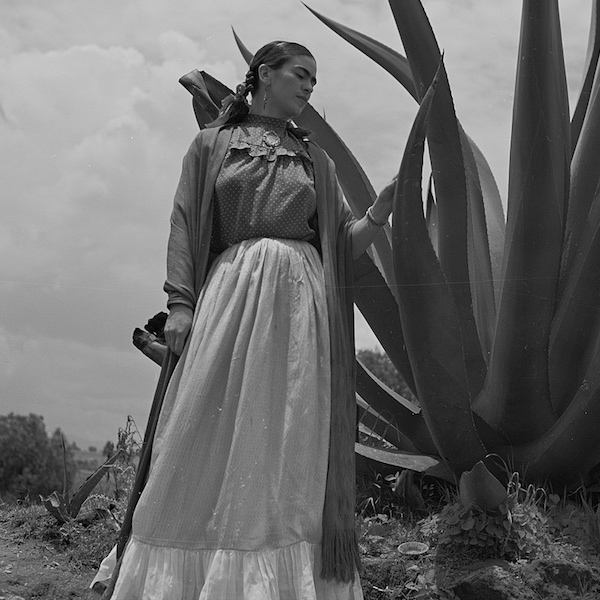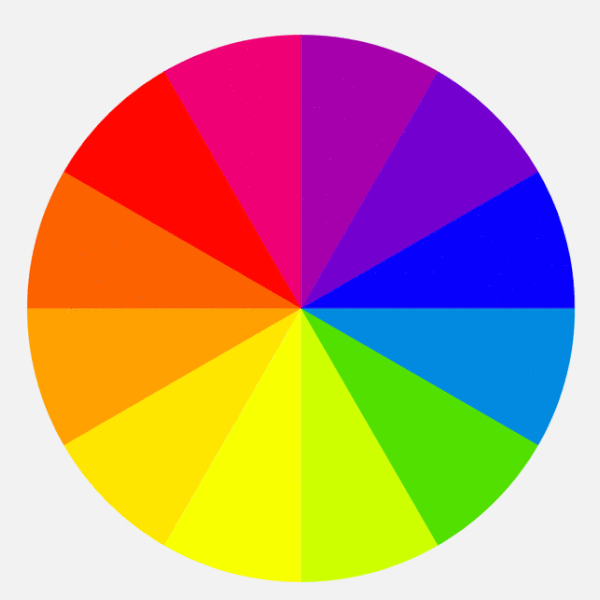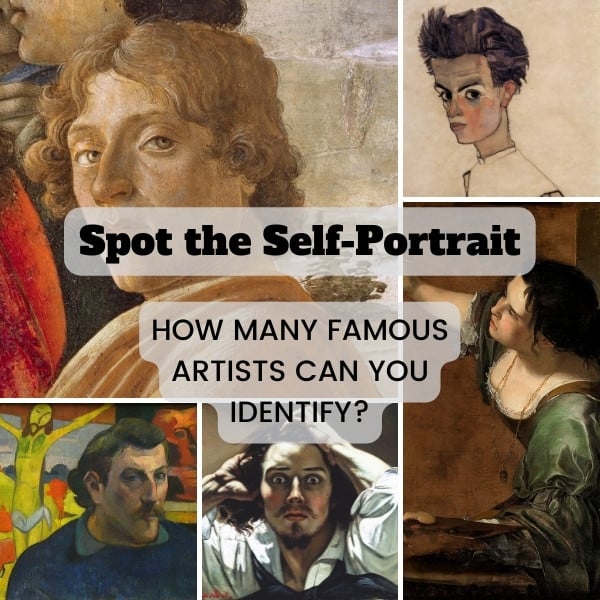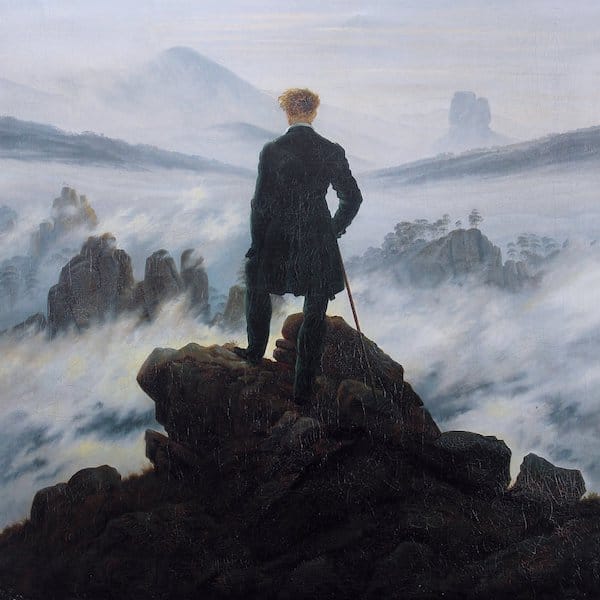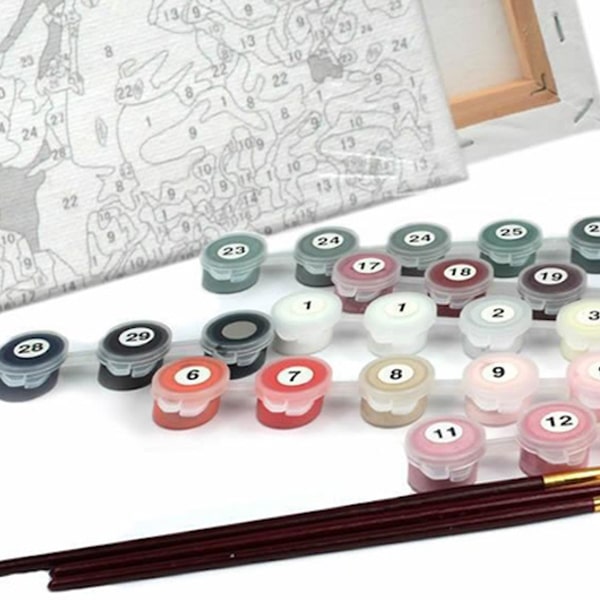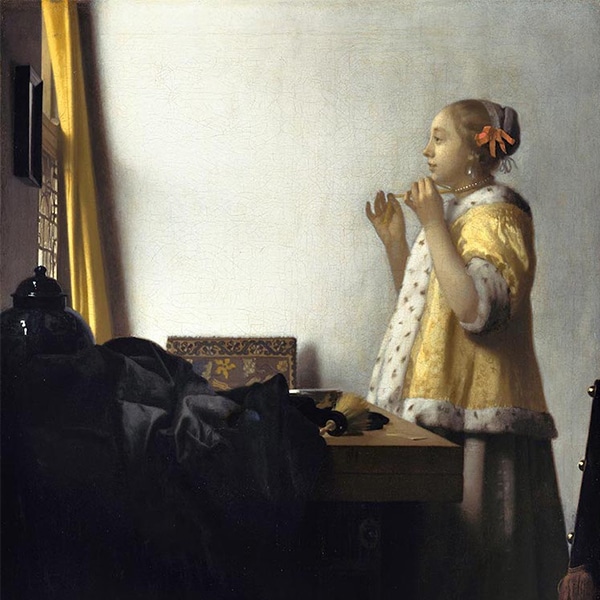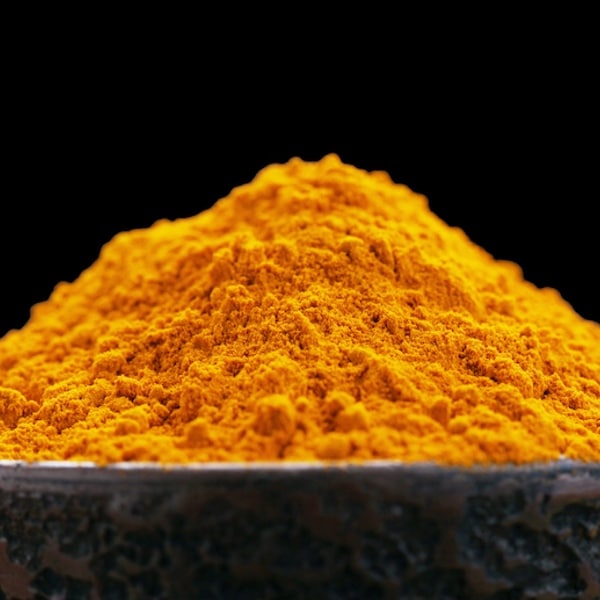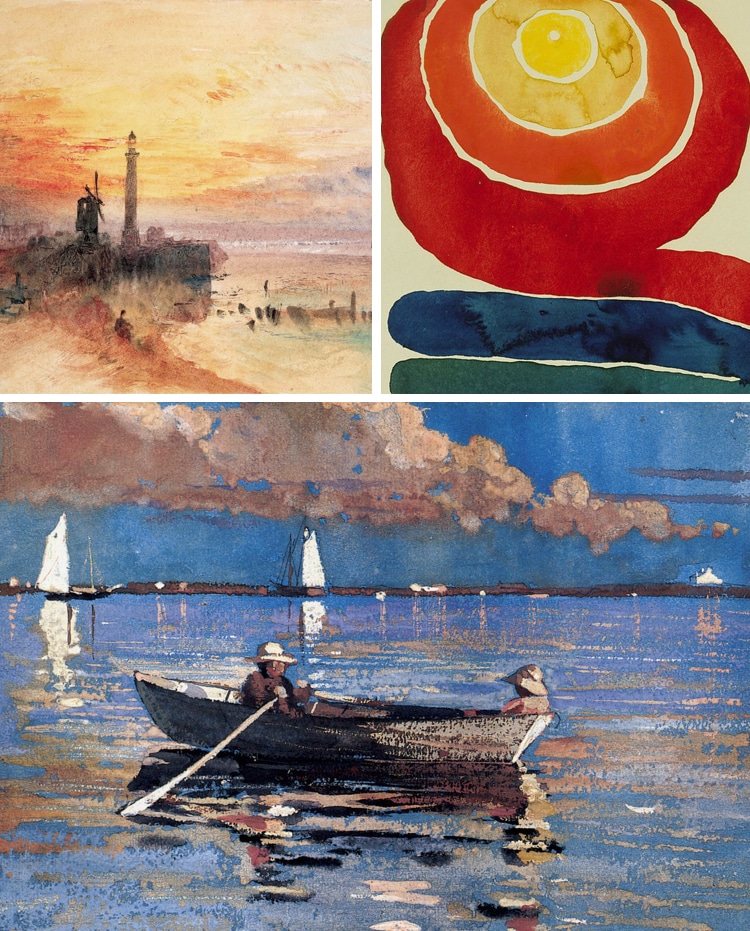
Watercolor painting is one of the most accessible forms of art. More likely than not, everyone has tried this type of painting at some point in their life, whether it be in art class as a child or just discovering it as an adult. Despite this familiarity, however, many people don’t know its rich history and some of the most famous watercolor artists who have made the medium what it is today.
Similar to textile art, watercolor painting has roots in Paleolithic Europe, but it gained some popularity in manuscript illumination in the Middle Ages. Using brightly colored pigments, artists illustrated small scenes and decorative designs in the margins of handwritten books. These elaborate texts weren’t for everyone—it took four people to create one illuminated manuscript—and the often-religious works were mostly confined to monasteries.
The Renaissance brought watercolor painting into the spotlight. It went beyond decorative manuscripts and into the works of artists like Albrecht Dürer. He, like other easel painters during that time, used watercolor for sketches, copies, or informal drawings. Watercolor painting was also adopted by the elite class as part of their overall education and eventually popularized—particularly in England—as a way to chronicle one’s travels. But while watercolor painting was well known, it was not taken as seriously as oil painting or printmaking.
In the 19th century, however, watercolors had a major bump in status. There was a general excitement about worldwide exploration, and wildlife and nature illustrations were used to illustrate scientific publications. Artist and ornithologist John James Audubon represents the height of this movement, and he used watercolor painting to help bring his realistic drawings of birds to life. His famous book, The Birds of America (1827 – 1839), identified 25 new species. With it, he began an artistic tradition that still lives on today—field guides as illustrated with watercolors.
While Audubon had a restrained, technical approach to his work, other famous watercolor artists weren’t as precise. Georgia O’Keeffe, for instance, played with the fluidity of the medium to create paintings that are beautiful fields of intense color. Like Audubon, she was inspired by the natural world, but her interpretation of it is the complete opposite. Together, they demonstrate the incredible range that watercolor has.
To understand the appeal of watercolor painting today, learn more about some of the most famous watercolor artists throughout history.
Albrecht Dürer (1471 – 1528)
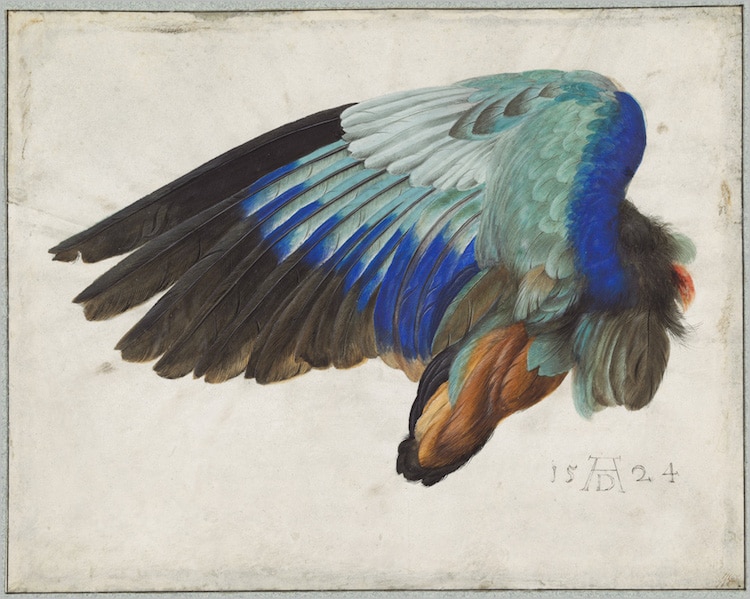
“Left Wing of a Blue Roller,” circa 1500 or 1512. (Photo: Public Domain)
Albrecht Dürer was a man of many talents and was known for his paintings, woodcuts, and engravings. In terms of watercolor, he was considered one of the first prominent European painters to use the medium in his work. This took the form of sketches of landscapes and nature, which we're still able to see today thanks to his almost-obsessive collection of work.
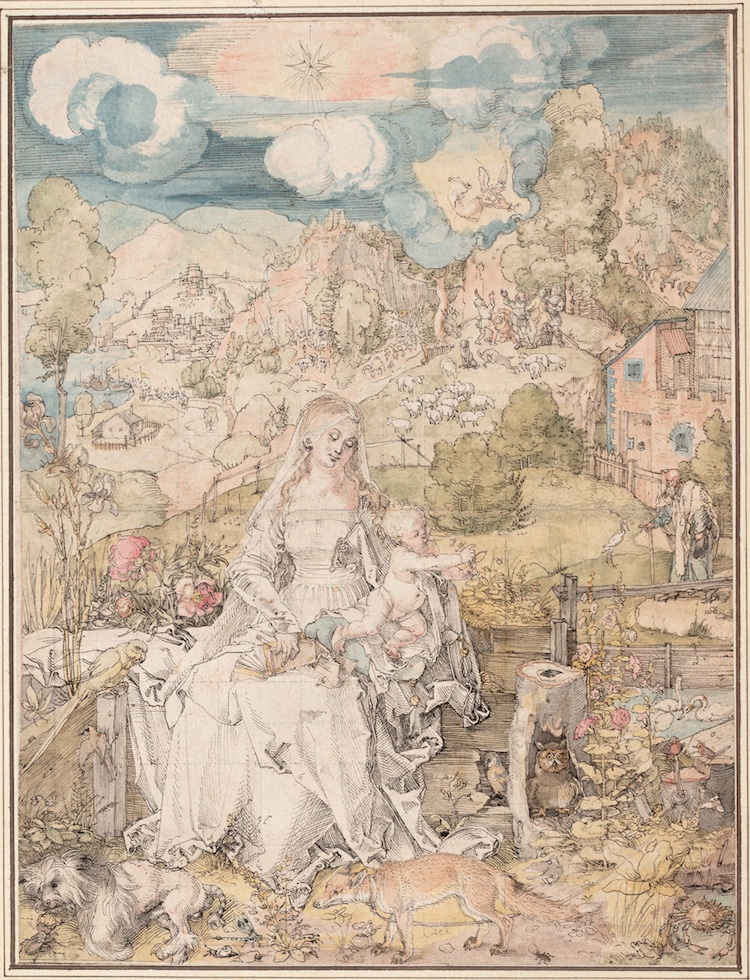
“The Virgin and Child with a Multitude of Animals and Plants,” circa 1503. (Photo: Public Domain)
J.M.W. Turner (1775 – 1851)
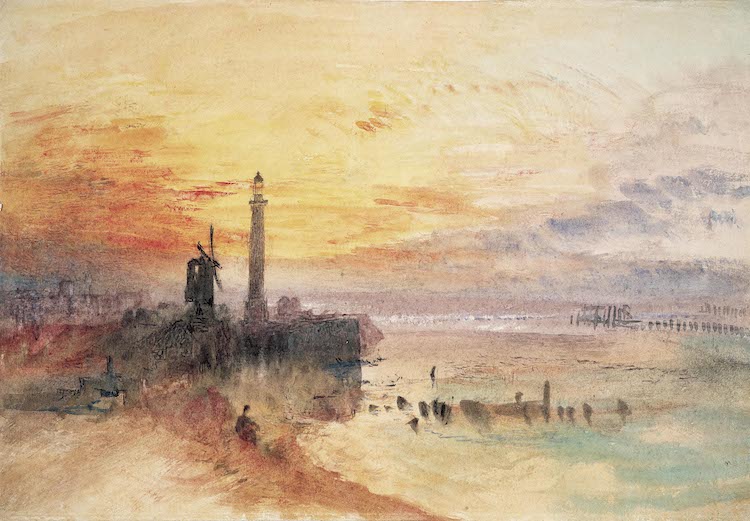
“Great Yarmouth Harbour, Norfolk,” circa 1840. (Photo: Public Domain)
Like Dürer, J.M.W. Turner dabbled in more than watercolor painting. Counting poetry and teaching as part of his interests, his general artistic talent was nurtured from a young age. He used his skills in watercolors to show in exhibitions and produce commercial works that provided him his “first real income.” Later, Turner used the medium as a way to chronicle his travels—his passion for it never waning. The last decade of his working life featured a surge in watercolor painting production.
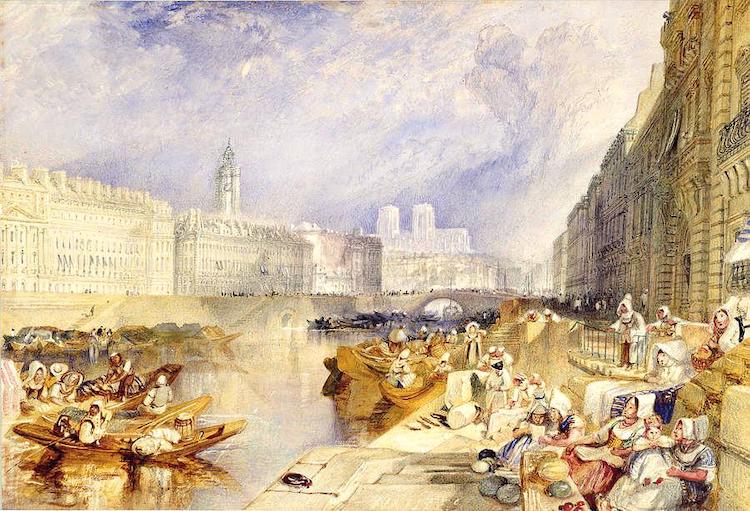
“Nantes from the Ile Feydeau,” circa 1829-1830. (Photo: Public Domain)
William Blake (1757 – 1827)
 William Blake is considered one of the greatest poets in the English language, but his art is noteworthy as well. After studying it as a child, he had an apprenticeship with an engraver before trying watercolor painting. Eventually, he perfected his technique of “fresco,” which is basically monotype printing; he first painted a design on a flat surface (like a copper plate) and then applied it to paper. The designs were then individually finished in ink and watercolor, ensuring that each image was one of a kind.
William Blake is considered one of the greatest poets in the English language, but his art is noteworthy as well. After studying it as a child, he had an apprenticeship with an engraver before trying watercolor painting. Eventually, he perfected his technique of “fresco,” which is basically monotype printing; he first painted a design on a flat surface (like a copper plate) and then applied it to paper. The designs were then individually finished in ink and watercolor, ensuring that each image was one of a kind.
John James Audubon (1785 – 1851)

“The Birds of America” Depicting a Ruffed Grouse. (Photo: Public Domain)
It was about 90 years ago that John James Audubon completed The Birds of America, but it's still lauded as being one of the best ornithological books ever produced. Audubon's quest to document our feathered friends also helped start the artistic tradition of naturalistic renderings being completed with watercolor.
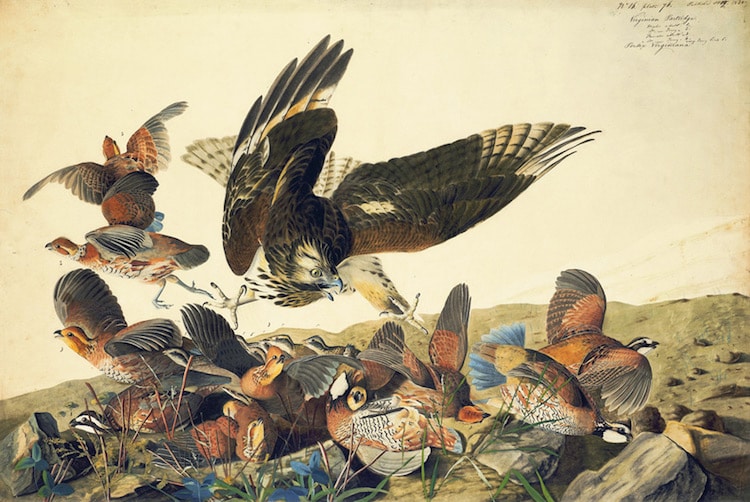
“Northern Bobwhite (Colinus virginianus) and Red-shouldered Hawk (Buteo lineatus),” circa 1825. (Photo: Public Domain)
Elizabeth Murray (1815 – 1882)
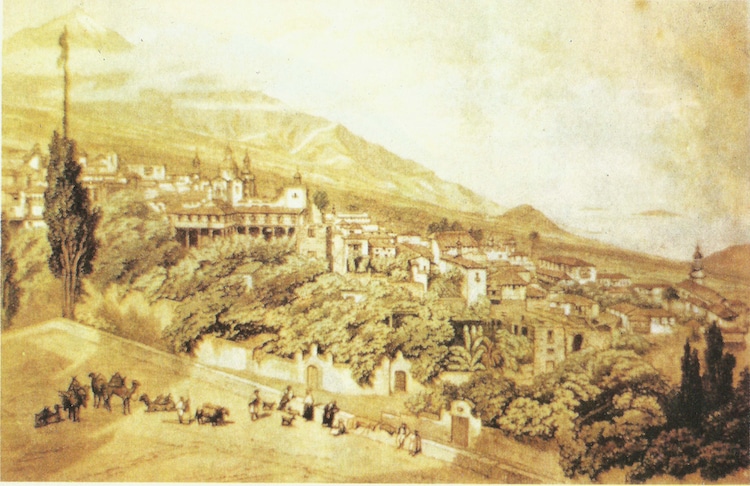
“Vista de la Orotava y del Pico Teide,” circa 1851. (Photo: Public Domain)
British artist Elizabeth Murray learned watercolor painting from her father, Thomas Heaphy, who was also a watercolorist. The two traveled together, and Murray spent extensive time in Rome, Morroco, and the Canary Islands. Over the course of 10 years, she painted the landscape as well as portraits from her travels, too. Her works are known for her color choices which use brown, violet, blue, black, red, and gold, as well as olive and tan colors to give them a warm-toned appearance.
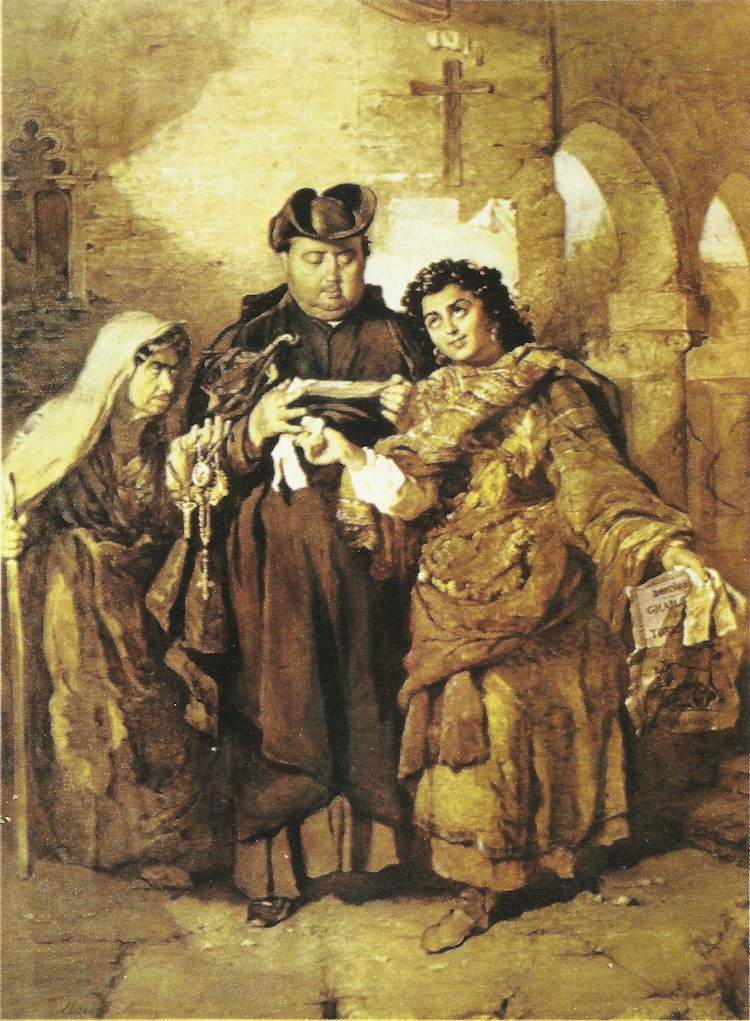
“Church Patronage,” 1860. (Photo: Public Domain)
Thomas Moran (1837 – 1926)
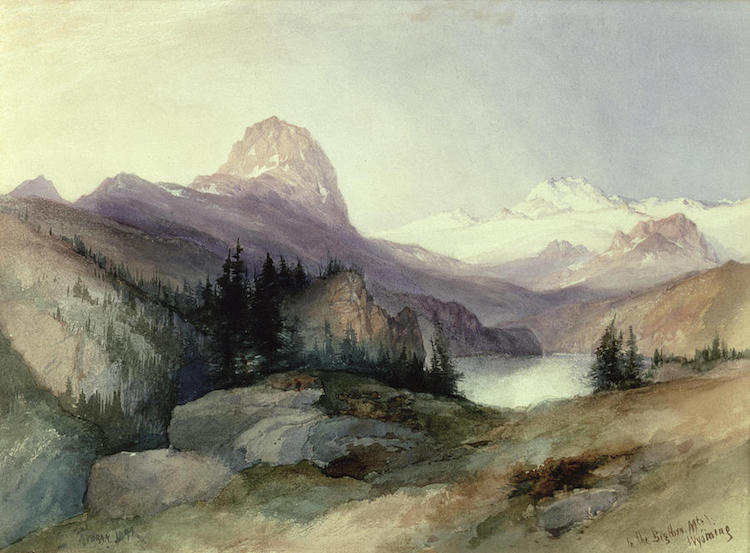
“In the Bighorn Mountains,” 1889. (Photo: Public Domain)
Thomas Moran is famous for his landscape watercolors, particularly those of Yellowstone National Park. In fact, it's his ethereal images of its geysers and hot springs that helped convinced the U.S. Congress to formally designate it as Yellowstone National Park in 1892. Moran's practice was informed by the Hudson River and Rocky Mountain schools—artistic schools and movements that shaped the aesthetics and imagery of 19th-century American landscape painting.
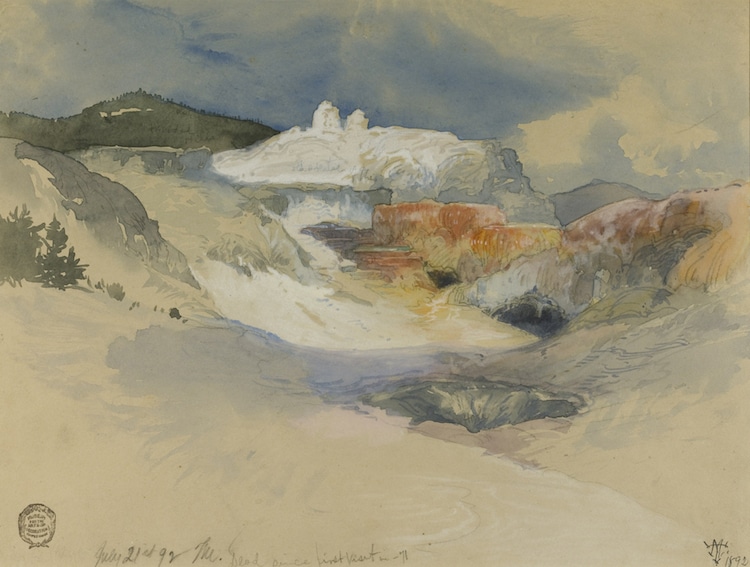
“Yellowstone, Hot Spring,” 1892. (Photo: Public Domain)
Winslow Homer (1836 – 1910)
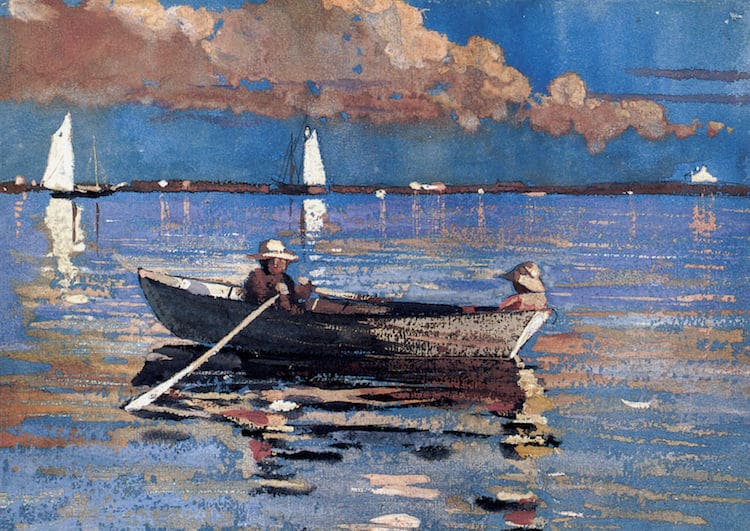
“Gloucester Harbor,” 1873. (Photo: Public Domain)
Self-taught painter Winslow Homer based his artistic practice of being in the moment. Although a very private person, one of his contemporaries, artist Eugene Benson, wrote that Homer believed artists “should never look at pictures.” Rather, they should “stutter in a language of their own” and paint (or draw) directly from life. For Homer, this meant idyllic, quiet scenes of everyday life that he completed at home in Massachusetts as well as trips abroad.
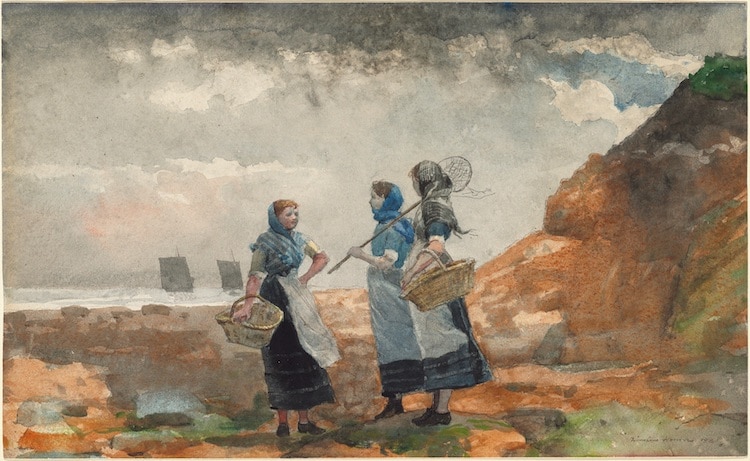
“Three Fisher Girls,” 1881. (Photo: Public Domain)
John Singer Sargent (1856 – 1925)
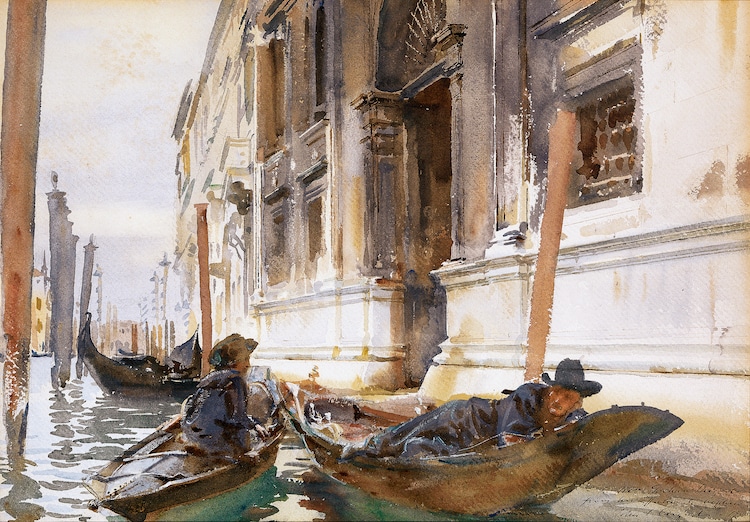
“Gondoliers’ Siesta,” circa 1904. (Photo: Public Domain)
John Singer Sargent is renowned for his portraiture, but his watercolor works mark a departure from them. In a similar tradition to other painters, his watercolors were often of landscapes that documented his travels. In these compositions, Sargent tweaked his style to reflect the playful fluidity of the medium; whereas his oil portraits were tightly rendered, the watercolor images of ships and the shore were done in a gestural style.
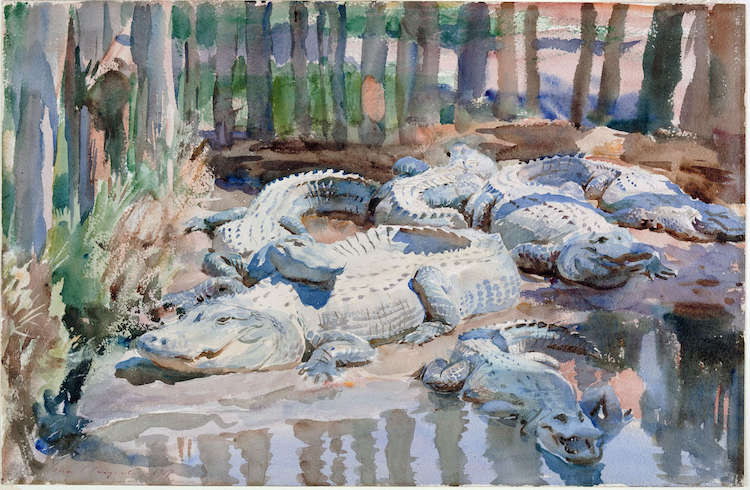
“Muddy Alligators,” 1917. (Photo: Public Domain)
Georgia O’Keeffe (1887 – 1986)
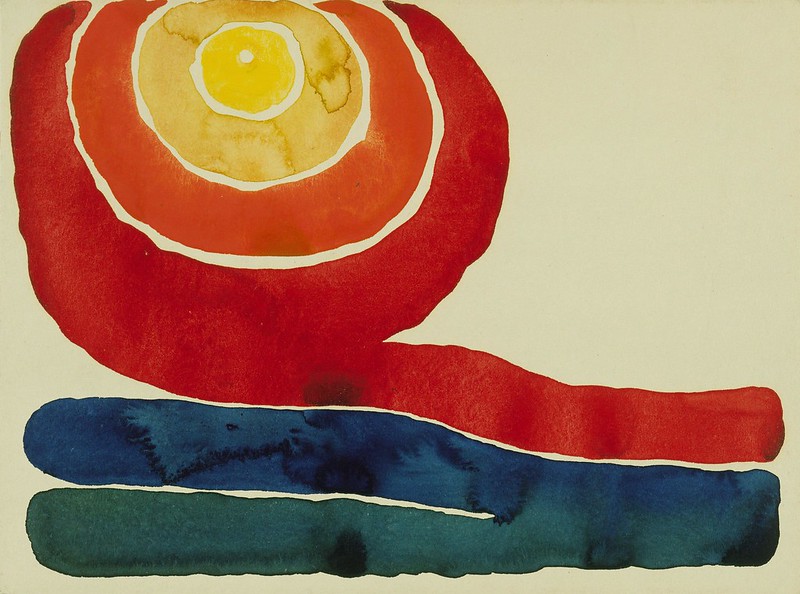 Georgia O'Keeffe began experimenting with watercolors in her late 20s as a way to play with color and composition. This was before her iconic oil paintings of flowers, and the abstracted watercolors chronicle her artistic journey to becoming comfortable working in a less representational style.
Georgia O'Keeffe began experimenting with watercolors in her late 20s as a way to play with color and composition. This was before her iconic oil paintings of flowers, and the abstracted watercolors chronicle her artistic journey to becoming comfortable working in a less representational style.
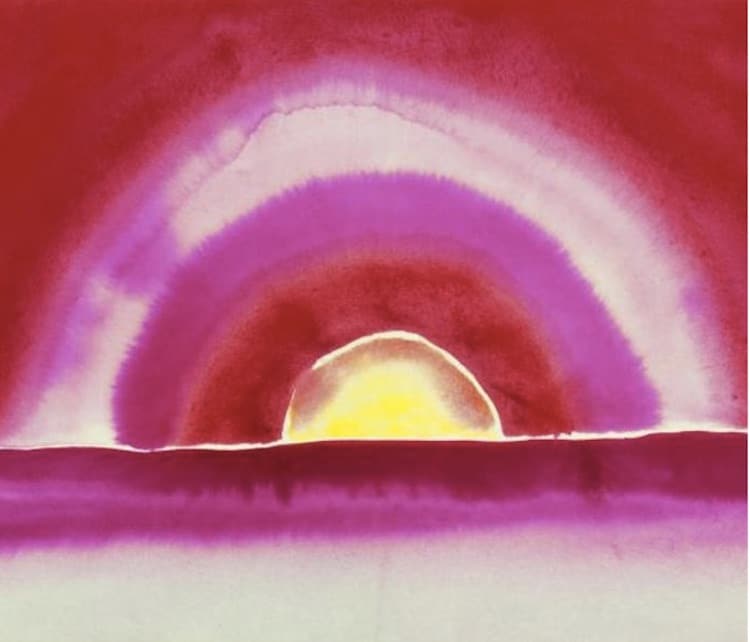
“Sunrise,” 1916. (Photo: Public Domain)
Paul Klee (1879 – 1940)
In 1911, Paul Klee joined an artist group called Blaue Reiter, an organization that used their work as a way to express “spiritual truths.” Interested in the likes of non-figurative art and primitivism, color was an important part of the group's aesthetic. Klee's watercolor paintings were a means of experimentation in order to understand his relationship with the “realm of color.”
Charles Demuth (1883 – 1935)
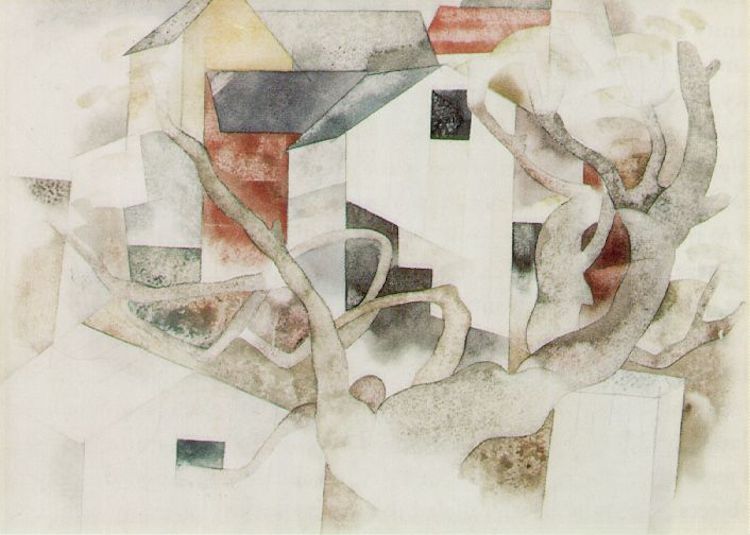
“Trees and Barns: Bermuda,” 1917. (Photo: Public Domain)
Charles Demuth artistically came of age during modernism, and his encounters with Cubism were a big influence to his watercolor works. This love of sharp lines and geometric shapes made him a founding member of the Precisionist Movement; his structured elements were paired with diffused washes, fusing order and chaos.
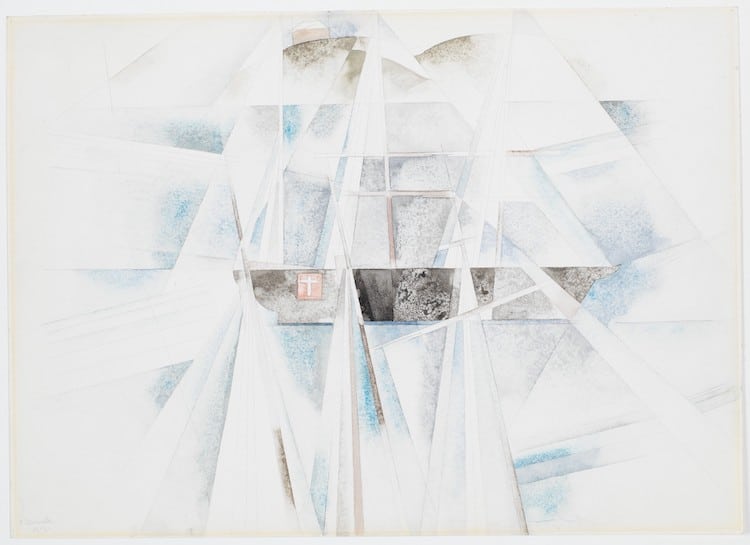
“Bermuda No. 2, The Schooner,” 1917. (Photo: CC0 1.0)
Reginald Marsh (1898 – 1954)
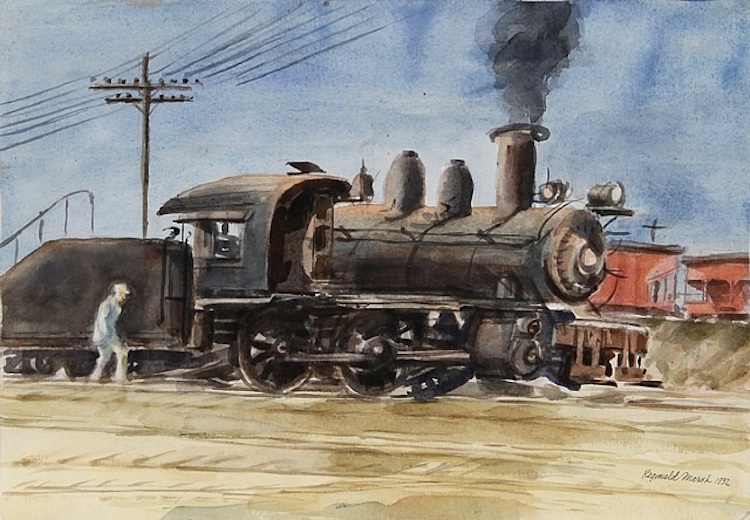
“Locomotive,” 1932. (Photo: Public Domain)
Reginald Marsh‘s works have become synonymous with New York City. During the 1930s and 40s, he chronicled the everyday life of the bustling metropolis; this included areas on the fringe like burlesque parlors and Coney Island. With such observational skills, his work was a perfect fit for journalism, and he worked for The Daily News. Of watercolor, he said, “Watercolor I took up and took to it well, with no introduction.”
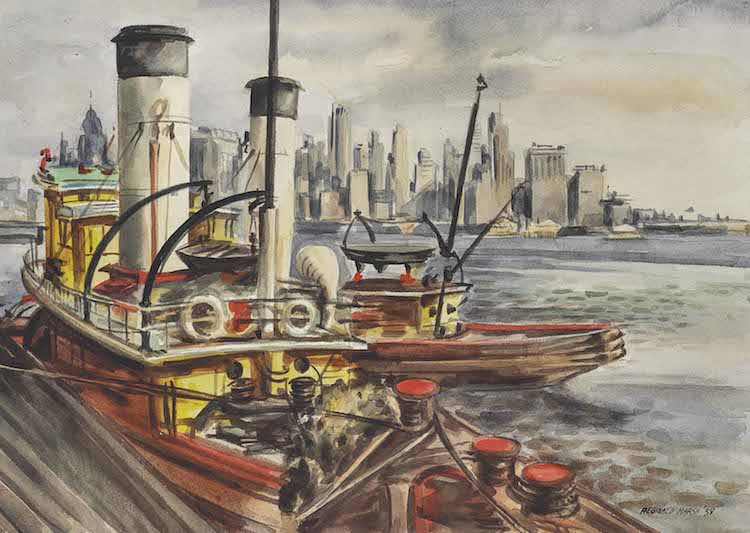
“Tug Boats, New York,” 1938. (Photo: Public Domain)
Andrew Wyeth (1917 – 2009)
American artist Andrew Wyeth is the son of a well-known illustrator, N.C. Wyeth. Thanks to his father's guidance, Andrew mastered watercolor at an early age. By 20 years old, he had his first solo exhibition featuring all watercolor paintings. (The show sold out.) As his career continued to grow, Andrew expanded his chosen media to egg tempera, but he continued to create watercolors inspired by his solitary walks in his hometown of Chadds Ford, Pennsylvania as well as Cushing, Maine.
Edward Hopper (1882 – 1967)
 Edward Hopper is known for oil paintings like the iconic Nighthawks, but the artist was adept at watercolors, too. In both media, Hopper's focus was the same; the American experience as seen through landscapes. “My aim in painting,” he's quoted as saying, “has always been the most exact transcription possible of my most intimate impressions of nature.”
Edward Hopper is known for oil paintings like the iconic Nighthawks, but the artist was adept at watercolors, too. In both media, Hopper's focus was the same; the American experience as seen through landscapes. “My aim in painting,” he's quoted as saying, “has always been the most exact transcription possible of my most intimate impressions of nature.”
Related Articles:
Guggenheim Releases More Than 1,700 Masterful Works of Modern Art Online
9 Abstract Artists Who Changed the Way We Look at Painting
Gorgeous Watercolor Paintings of the Diverse Landscapes Nature Has to Offer
Metropolitan Museum of Art Now Offers Over 1,600 Free Art Books Online
Unraveling the Emotional Depth of Edward Hopper’s Modern Masterpiece ‘Nighthawks’
